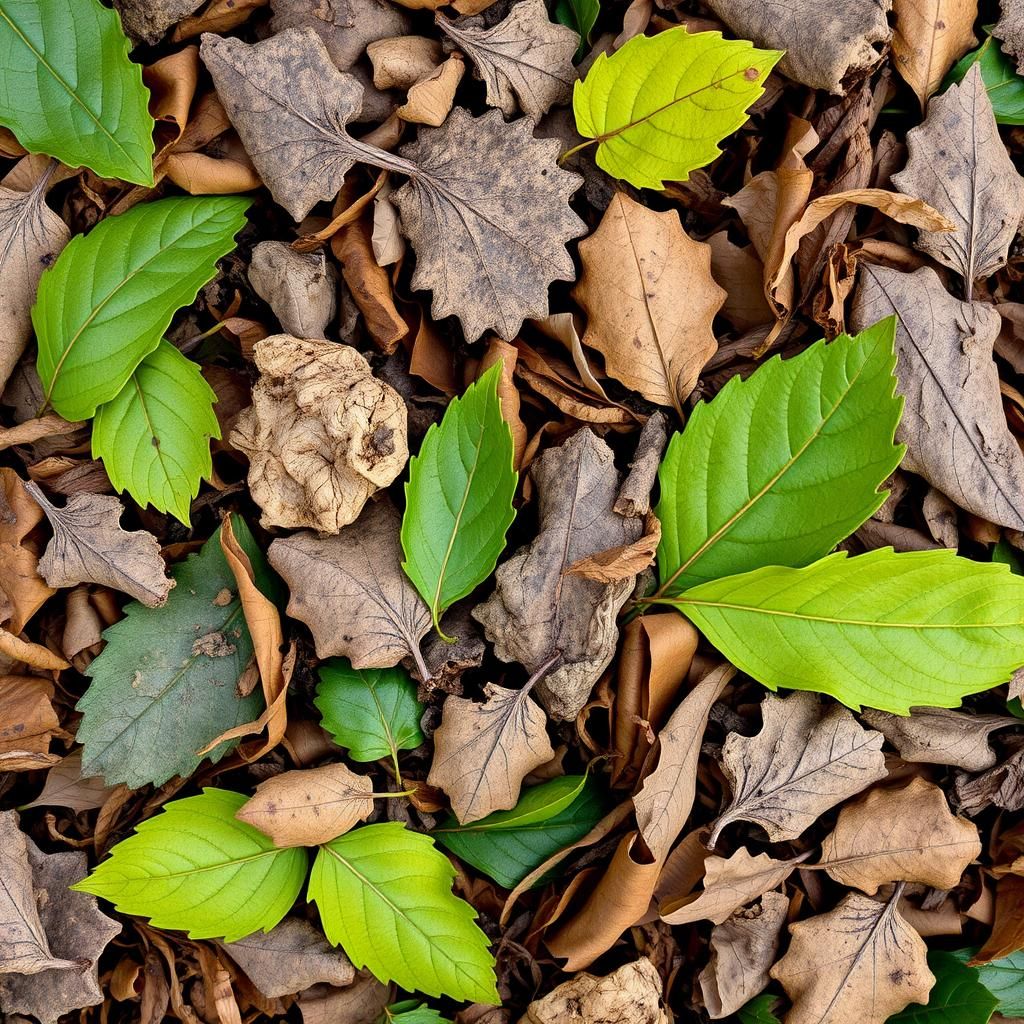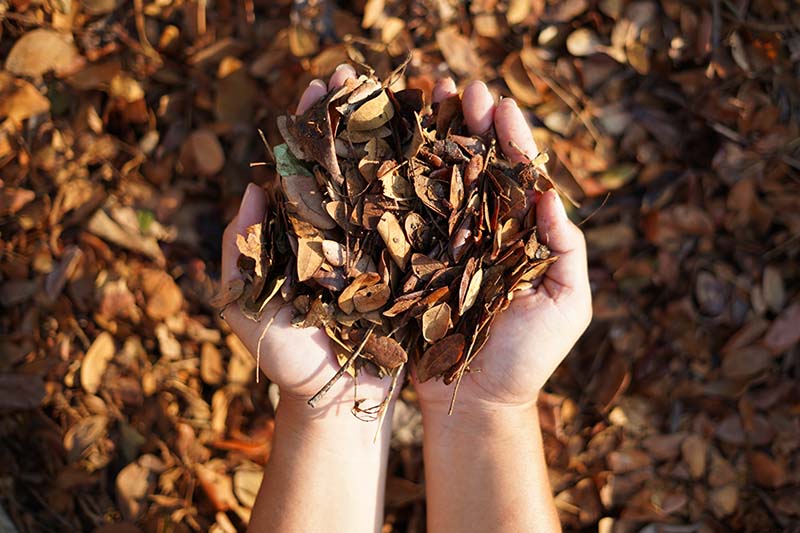Are Dead Leaves Green or Brown Compost? Understanding the Nutritional Value of Leaf Litter

As autumn arrives, many gardeners face the task of managing fallen leaves, often questioning whether to classify them as green or brown compost material. Understanding the nutritional value of leaf litter is crucial for optimizing composting practices. While leaves may appear brown and lifeless, they carry essential nutrients that can enhance soil quality. This article explores the characteristics of dead leaves, their role in the composting process, and how to effectively utilize them to create rich, organic matter that nourishes gardens. By examining the benefits and proper management of leaf litter, gardeners can transform waste into valuable resources for their plants.
Are Dead Leaves Green or Brown Compost?
Dead leaves are typically categorized as brown compost materials in the realm of composting. This categorization is due to their high carbon content, which plays a vital role in the composting process. When leaves die, they lose their vibrant green color due to the breakdown of chlorophyll, leading to the brown appearance that is essential for creating a balanced compost pile. Brown materials, including dead leaves, provide critical carbon, which interacts with nitrogen-rich green materials like grass clippings and kitchen scraps to promote healthy microbial activity necessary for decomposition. Thus, while they were once green, once dead, they represent browns in composting terminology.
The Role of Carbon in Composting
Carbon is a fundamental component of composting materials and is primarily found in brown compost items, such as dead leaves. In the composting ecosystem, carbon serves as a source of energy for microorganisms, playing an essential role in the breakdown of organic material. A proper balance between carbon and nitrogen is crucial for achieving successful composting, with a ratio of approximately 30:1 (carbon to nitrogen) being ideal. Therefore, dead leaves, as high-carbon materials, are indispensable for developing rich compost that can nurture gardens and plants.
Differences Between Green and Brown Compost Materials
In composting, materials are broadly classified into green and brown categories. Green materials are those that are rich in nitrogen, such as food scraps and fresh grass clippings, while brown materials, like dead leaves, are high in carbon. The key distinction lies in their nutrient composition; green ingredients provide the necessary nutrients to fuel microbial activity, while brown components supply the carbon that serves as an energy source. Understanding this difference is crucial for composters to achieve a well-balanced compost pile, which accelerates the decomposition process and results in nutrient-dense compost.
Benefits of Using Dead Leaves in Composting
Incorporating dead leaves into compost offers numerous benefits. They act as a bulking agent, improving aeration within the compost pile, which is essential for many beneficial microbes. The addition of leaves also enhances the structure of the compost, promoting moisture retention and helping to create a more homogeneous mixture. Furthermore, dead leaves are widely available in many environments during the fall, making them an excellent and sustainable choice for composting. This practice not only reduces waste but also creates nutrient-rich compost that promotes plant health when applied to gardens and landscaping.
How to Prepare Dead Leaves for Composting
Before adding dead leaves to your compost pile, it is advisable to prepare them to facilitate their decomposition. This can be done by shredding the leaves into smaller pieces, which increases their surface area and consequently, speeds up the composting process. Shredding helps prevent mats from forming that can slow down decomposition, ensuring that air can circulate effectively throughout the pile. Additionally, it is beneficial to mix the shredded leaves with green materials to achieve an optimal carbon-to-nitrogen ratio, further enhancing the efficiency of your compost.
Common Misconceptions About Dead Leaves in Compost
There are several misconceptions regarding the role of dead leaves in composting. A prevalent belief is that all dead organic matter is suitable for composting without consideration of their carbon and nitrogen balance. In reality, while dead leaves are excellent brown materials, they should not be the sole component of your compost. Another misconception is that leaves must be entirely decomposed before being added, when in fact, partially decomposed leaves can jumpstart microbial activity and contribute to the overall composting process. Understanding these misconceptions can lead to more effective composting practices.
| Composting Material Type | Carbon/Nitrogen Ratio | Examples |
|---|---|---|
| Green | 30:1 | Grass clippings, kitchen scraps |
| Brown | 80:1 | Dead leaves, straw |
Are dead leaves green or brown for compost?

Dead leaves are generally brown when it comes to composting. As leaves die, they lose their chlorophyll, the pigment responsible for their green color, thus turning brown. Brown leaves are high in carbon, which is an essential component for the composting process. They are often referred to as browns in composting terminology, contrasting with greens, which are nitrogen-rich materials like kitchen scraps and fresh grass clippings. For composting to be effective, a balance between brown and green materials is required.
Understanding the Role of Dead Leaves in Composting
Dead leaves play a crucial role in the composting process. They contribute to the carbon content of the compost pile, which is necessary for healthy microbial activity. A well-balanced compost requires a mix of both green and brown materials to achieve optimal decomposition. Here are the main functions of dead leaves in composting:
- Carbon Source: Dead leaves provide the carbon needed for microbial energy.
- Structure: Their dry nature helps aerate the compost, preventing compaction.
- Moisture Retention: They can help retain moisture within the compost pile.
Benefits of Using Brown Leaves in Compost
Incorporating brown leaves into your compost has several benefits. Their high carbon content balances the nitrogen from green materials, resulting in a rich compost that enhances soil health. Some notable advantages include:
- Nutrient-Rich: Brown leaves decompose over time, enriching the compost with essential nutrients.
- Reducing Waste: Using dead leaves helps reduce yard waste and contributes to ecosystem sustainability.
- Improved Soil Structure: The resulting compost improves soil aeration and drainage.
How to Collect and Use Dead Leaves for Composting
Collecting and using dead leaves for composting is straightforward. First, gather fallen leaves from your yard, ensuring they are dry and free from disease or pests. Here’s a simple guide to using them effectively:
- Gathering: Use a rake or leaf blower to collect leaves.
- Shredding: Shredded leaves decompose faster; consider using a leaf shredder.
- Layering: Mix brown leaves with greens in your compost pile for the best results.
Balancing Greens and Browns in Your Compost
To achieve a successful compost mix, understanding the balance between greens and browns is essential. Each component serves a purpose, and proper ratios lead to efficient composting. Here’s how to balance these materials:
See also:
- Proportion: A general rule is 3 parts brown (dead leaves) to 1 part green materials.
- Mixing: Combine layers of greens and browns to encourage good aeration.
- Monitoring: Check moisture levels and adjust the balance as the compost breaks down.
Common Misconceptions About Dead Leaves in Compost
There are several misconceptions regarding the use of dead leaves in compost. Understanding these can help ensure effective composting practices. Here are a few myths to be aware of:
- All Leaves Are Equal: Not all leaves decompose at the same rate; some may take longer.
- Color Matters: Dying leaves change color but retain their composting value.
- Too Many Browns: Excess browns can slow decomposition; always maintain balance.
Can I put dead leaves in my compost bin?

Yes, you can put dead leaves in your compost bin. Dead leaves are an excellent source of carbon, which is essential for the composting process. They help balance the nitrogen-rich materials like food scraps and grass clippings, making for a well-rounded compost mix. However, there are some considerations to keep in mind.
Benefits of Adding Dead Leaves to Compost
Adding dead leaves to your compost bin provides various benefits, which include:
- Carbon Source: Dead leaves are rich in carbon, which is crucial for the decomposition process.
- Airflow Improvement: The texture of the leaves can create air pockets in your compost, allowing for better aeration.
- Nutrient Boost: As leaves break down, they release essential nutrients back into the compost.
Best Types of Leaves for Composting
Not all leaves are created equal, and some work better in compost than others. The best types include:
- Deciduous Leaves: Leaves from trees that lose their leaves annually, like maples and oaks, decompose well.
- Wood Chips: If you shred them, they can add more texture and aeration to the compost.
- Non-Toxic Varieties: Ensure the leaves you use are from non-toxic plants to avoid harmful chemicals in your compost.
How to Prepare Leaves for Composting
To optimize the use of dead leaves in your compost bin, it's essential to prepare them effectively:
- Shredding: Shred leaves into smaller pieces to speed up the decomposition process.
- Mixing: Combine leaves with green materials to achieve a balanced carbon-to-nitrogen ratio.
- Moistening: Ensure the leaves are slightly moist but not soggy, as this helps in microbial activity.
Potential Issues with Leaves in Compost
While dead leaves are beneficial for composting, there are some potential issues to be aware of:
- Slow Decomposition: Whole leaves can take longer to break down compared to shredded leaves.
- Matting: Layers of leaves can compact and create a mat, blocking airflow if not mixed well.
- Pest Attraction: Some leaves may attract pests if not properly managed.
How to Use Leaves Seasonally in Composting
To make the most of your leaves throughout the seasons, here are some tips:
- Collecting in Fall: Gather leaves when they fall to ensure a steady supply for your compost.
- Layering Technique: Use a layering technique for better balance with other materials as you add leaves.
- Storing Extra Leaves: Store excess leaves in bags or bins until you’re ready to add them to your compost.
What is the best way to dispose of dry leaves?

To properly dispose of dry leaves, it's essential to consider environmental impact, local regulations, and the most efficient methods. Here are the best ways to manage this yard waste:
Composting Dry Leaves
Composting is one of the most environmentally friendly methods for disposing of dry leaves. By creating a compost pile, you can turn organic materials into nutrient-rich soil.
- Collect the Leaves: Gather the dry leaves from your yard, ensuring they are free of debris and contaminants.
- Create a Compost Bin: Use a compost bin or designated space in your yard to stack the leaves along with other organic waste like vegetable scraps or grass clippings.
- Maintain the Pile: Turn the compost pile regularly to aerate it and promote decomposition, which leads to rich compost ready for garden use.
Mulching Leaves
Mulching is another effective way to dispose of dry leaves. It helps in returning nutrients to the soil and preventing weeds.
- Shred the Leaves: Use a leaf shredder or a lawn mower with a bagging attachment to reduce the leaves into smaller pieces.
- Apply as Mulch: Spread the shredded leaves around flower beds, trees, and vegetable gardens to improve soil quality and retain moisture.
- Prevent Weeds: The mulch acts as a barrier, helping to suppress weeds while offering essential nutrients as it decomposes.
Bagging for Curbside Pickup
Many municipalities offer curbside pickup services for yard waste, including dry leaves. This method is convenient for homeowners who prefer not to compost or mulch.
See also:
- Check Local Regulations: Look up your local waste management guidelines regarding leaf collection dates and procedures.
- Use Approved Bags: Fill biodegradable or paper bags with dry leaves, ensuring they are securely closed for pickup.
- Place Bags at the Curb: Set the bags out on the designated collection day for your local waste management service to collect.
Burning Leaves
In certain areas, burning leaves may be an option, although there are regulations and restrictions typically associated with this method.
- Check Local Laws: Verify if burning leaves is allowed in your area and obtain any necessary permits.
- Choose a Safe Location: Select an open area away from structures, trees, and flammable materials.
- Monitor the Fire: Stay present while burning to manage the flames and prevent the fire from getting out of control.
Using Dry Leaves as Animal Bedding
If you have pets or animals such as chickens or goats, dried leaves can serve as a comfortable bedding option.
- Gather Quality Leaves: Collect clean, dry leaves that are free from chemicals or contaminants.
- Layer as Bedding: Place the leaves in the animal enclosures to provide warmth, comfort, and absorb moisture.
- Compost After Use: Once the bedding is soiled, you can compost it to recycle the organic material back into your garden.
Are dried leaves considered compost?

Dried leaves are indeed considered compost material. They are an excellent carbon source that contributes to the process of composting. When combined with nitrogen-rich materials, such as kitchen scraps or green plant matter, dried leaves help create a balanced compost pile. This balance is crucial for effective microbial activity, which breaks down organic materials into nutrient-rich compost.
Dried Leaves as Carbon Source
Dried leaves are primarily composed of carbon, making them an essential component of a compost pile. In composting, a carbon-to-nitrogen (C/N) ratio is vital for optimal decomposition. Here's how dried leaves fit in:
- Dried leaves contribute high carbon content, essential for balanced composting.
- The right C/N ratio supports effective microbial growth and decomposition.
- Including dried leaves can help prevent the compost pile from becoming too wet or smelly.
Benefits of Using Dried Leaves in Compost
Incorporating dried leaves into compost offers numerous benefits that enhance the composting process and the quality of the final product. Consider the following advantages:
- Dried leaves improve aeration within the compost pile, preventing compaction.
- They help retain moisture, which is crucial for microbial activity during breakdown.
- The addition of dried leaves can lead to a rich compost with improved nutrient content for your garden.
How to Incorporate Dried Leaves in Compost
To effectively use dried leaves in your compost pile, it's important to follow certain practices to maximize their benefits. Here’s a step-by-step guide:
- Chop or shred dried leaves to increase their surface area and speed up decomposition.
- Layer dried leaves with green materials to maintain the appropriate C/N ratio.
- Moisten the leaves slightly before adding them to ensure they are not too dry and facilitate microbial activity.
Common Misconceptions about Dried Leaves
Several misconceptions exist regarding the use of dried leaves in composting. It is essential to clarify these points to optimize composting efforts:
- Some believe dried leaves are useless; however, they are actually a valuable carbon source.
- Others think dried leaves will cause a mess; properly layered and managed, they are easy to work with.
- A misconception is that they take too long to break down; when mixed well, they decompose relatively quickly compared to other materials.
Best Practices for Storing Dried Leaves
Proper storage of dried leaves is key to maintaining their quality for composting. Here are some best practices for storage:
- Store dried leaves in a dry area to prevent moisture buildup and fungal growth.
- Use breathable containers or bags to ensure proper air circulation and limit compacting.
- Check stored leaves periodically for any signs of decomposition and use them as necessary.
Questions from Our Readers
Are dead leaves considered green or brown compost?
Dead leaves are typically classified as brown compost materials due to their high carbon content. While they might still have some moisture, the overall composition lends itself to being a part of the brown material category in composting.
Can dead leaves be beneficial for composting?
Yes, dead leaves can be quite beneficial for composting. They provide essential carbon that balances the nitrogen-rich materials, creating a healthy compost environment that promotes decomposition.
How should dead leaves be prepared for composting?
To effectively use dead leaves in composting, it is recommended to shred them before adding them to the compost pile. This helps increase the surface area, allowing for faster decomposition and more efficient air circulation.
Do dead leaves decompose quickly in compost?
Dead leaves may take longer to decompose compared to other organic materials, especially if left whole, but their breakdown can be sped up by maintaining proper moisture and ensuring the compost pile is aerated.
See also:

If you want to read more articles like Are Dead Leaves Green or Brown Compost? Understanding the Nutritional Value of Leaf Litter, we recommend you check out our Compost category.
Leave a Reply
Related Articles